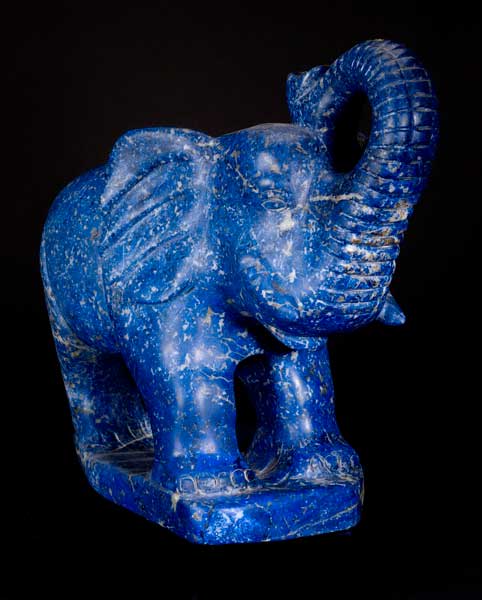Mughal Lapis Lazuli Sculpture of an Elephant, 16th Century CE - 18th Century CE
Lapis Lazuli
16 x 14.25
PF.6147
Further images
The elephant is one of the most sacred animals in the Subcontinent. This majestic creature is featured in the earliest extant cave paintings discovered in South Asia, indicating their importance....
The elephant is one of the most sacred animals in the Subcontinent. This majestic creature is featured in the earliest extant cave paintings discovered in South Asia, indicating their importance. Elephants feature prominently in Indian mythology and religion. The Buddha’s mother was said to have dreamt of a white elephant before she gave birth to her son. The legendary story of an elephant named Ashvatthama is detailed in the epic poem Mahabharata. The elephant is also regarded as the vahana, or “carriage of the gods.” Likewise, kings on earth often imitated their divine counterparts and rode on the backs of elephants. This practice is documented as early as the fourth century B.C. when Alexander the Great battled with the Indian King Porus. Elephants also served an active, prominent role in war, both for their imposing presence as well as their strength, durability, and mobility. Throughout the history of the Subcontinent, elephants have been revered as represented in painting, sculpture, and textiles. Today, Ganesh, the elephant-headed god of prosperity and well-being, remains one of the most popular deities in the Hindu pantheon.
This gorgeous sculpture of an elephant, carved from luxurious lapis lazuli, a stone surely fitting for this sacred creature, reveals the love and admiration that Indian culture holds for this amazing animal. Even under the rule of the Muslim Mughal Dynasty, the elephant retained its sacred status, as this sculpture clearly reflects. Both a gorgeous work of art and a historically significant artifact, this sculpture captures the majesty and strength of the elephant, rendered in one of the most valuable stones known to mankind.
This gorgeous sculpture of an elephant, carved from luxurious lapis lazuli, a stone surely fitting for this sacred creature, reveals the love and admiration that Indian culture holds for this amazing animal. Even under the rule of the Muslim Mughal Dynasty, the elephant retained its sacred status, as this sculpture clearly reflects. Both a gorgeous work of art and a historically significant artifact, this sculpture captures the majesty and strength of the elephant, rendered in one of the most valuable stones known to mankind.





